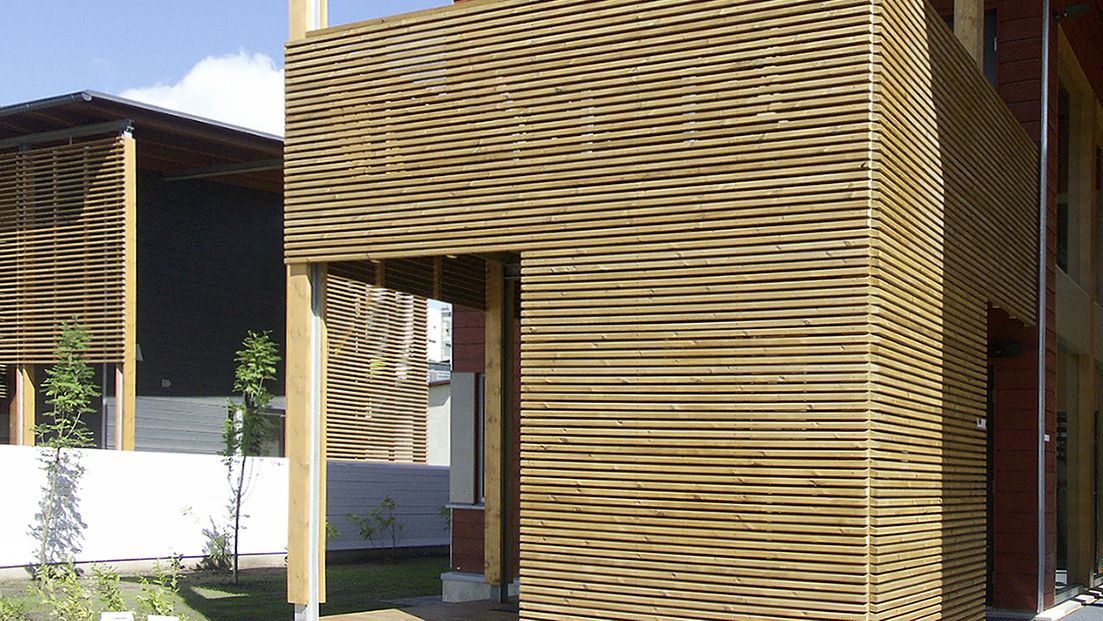
ThermoWood® is manufactured using a method developed in Finland. The wood is heated by slowly raising the temperature to around 200 degrees Celsius while the material is simultaneously protected with steam.
Besides providing protection, the steam also affects the chemical changes taking place in the wood. The manufacturing process respects the natural properties of wood using only heat and steam without any chemicals
Standard thermal modification classes are Thermo-S and Thermo-D.
With its exceptional properties non-toxic and ecological ThermoWood® is an optimal building material for many different areas of end use. ThermoWood® is an outstanding material for example for:
- exterior cladding and facades
- decking
- solar shades
- interior panelling and flooring
- garden and outdoor structures
- sauna materials

